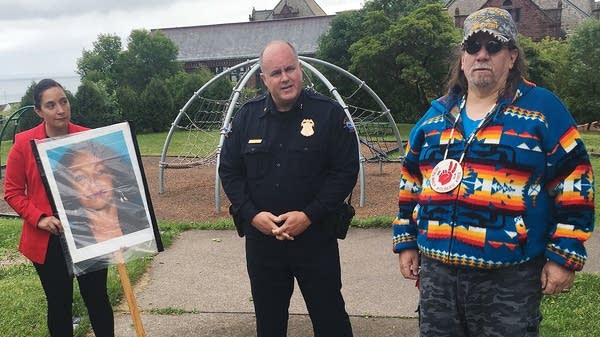'We're targeted': Duluth confronts issue of missing Native women as state task force meets

From right, Shawn Carr with Idle No More, Duluth Police Chief Mike Tusken and community relations liaison Alicia Kozlowski speak at a press conference Friday to bring attention to the disappearance of Sheila St. Clair, who went missing some time before Sept. 1, 2015.
Dan Kraker | MPR News
Go Deeper.
Create an account or log in to save stories.
Like this?
Thanks for liking this story! We have added it to a list of your favorite stories.


